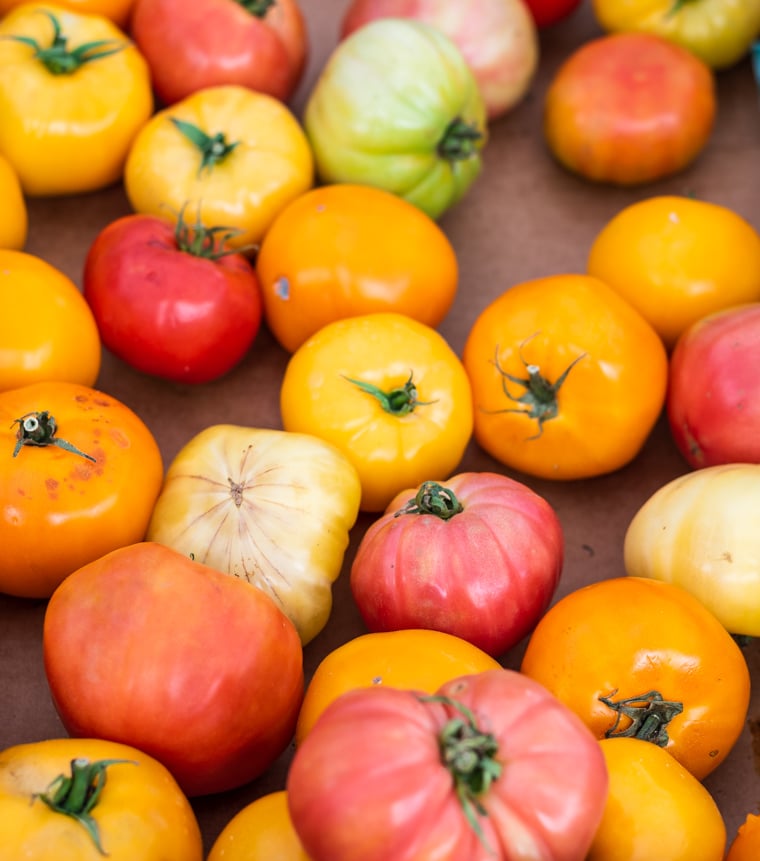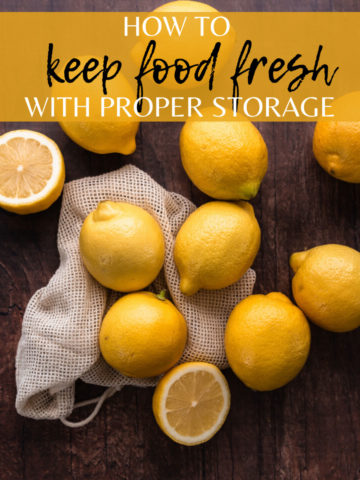Eating with the seasons sounds simple. But the reality is, it can be difficult to do 100% of the time.
The modern world is one of abundance. Most places have every fruit and vegetable you can think of - available all year round. But a lot of the food in your grocery store isn't necessarily in season or local.
The further the food had to travel, the earlier it was harvested. Each food needed water, nutrients, and fuel to finally reach your table. There are unseen costs when choosing what foods to buy. By creating meals based on the seasons, we can reduce the added costs.
It wasn't long ago that eating with the seasons was the way of life. Food was grown to provide for the household. Oranges used to be (maybe they still are?) given as Christmas gifts. My dad told me all about the excitement of getting an orange in his stocking.
Oranges were special because they weren't local. They don't grow in Iowa.

So what happened?
The modern world got pretty good transporting and storing food. It'd be pretty strange if bananas disappeared from the grocery store. We're just so used to it. We have leeks in August, asparagus in October, blueberries in December, pineapple in January.
At this point it's difficult to say what's in season, because we have it all, all the time.
The foods from distance lands aren't so special anymore.
Now we're not saying you have to avoid all non-local foods - I love bananas, pineapple, and avocado as much as the next person. But eating with the seasons can expand your horizons and challenge you to try new foods and different cooking techniques.
Eating with the seasons benefits you, your community, and the environment.

10 reasons to eat with the seasons
1) Freshness
Locally in season foods are generally fresher. When they don't need to cross continents, they can be harvested in their prime. Choose locally-grown in season produce. They get to your kitchen faster and fresher.
2) Nutrition
Seasonally-picked foods are at their peak nutrition, because they've been allowed to ripen on the plant to reach their full nutrition potential. The moment a food is harvested, it will slowly start losing nutrients. Though this nutrient loss isn't generally significant, the farther food has to travel, the fewer nutrients it will retain before it even touches the grocery store.. Buying locally and seasonally helps retain those nutrients.
3) Economy
Buying in season foods means you're supporting local farmers and the local economy. It's all about supply and demand. When we eat and buy with the seasons, it encourages the farmers to grow in season to meet the demand.
4) Community
Farmer's markets and CSAs (community supported agriculture) are great hubs for in season foods. These events support local farmers, while encouraging you to get to know them. These food-based communities connect the people to their food. Go to the markets, ask questions, and engage with the community.
5) Harmony
It's not surprising that we crave different foods as the seasons change. Light & fresh salads in summer. Warmth & Root veggies, soups and stews in the winter. Spring foods detoxify, summer foods hydrate the body, and fall/winter foods provide lots of vitamin C to support a strong immune system. It all makes sense when you think about it.
6) Variety
Variety is the spice of life. Changing seasons provide a constantly changing variety of foods. Love your morning fruit and yogurt? Try blueberries in summer, pears in fall, citrus in winter, and dried fruit in spring! Seasonal foods offer variety to keep things interesting!
7) Environment
Eating local decreases the call for greenhouse gases that result from fuel/transportation. The farther a food must travel, the more expensive the transportation costs, the more emissions...
8) Cost
Seasonal produce is generally cheaper. Fewer miles traveled means lower transportation costs. And with food growing in its natural climate, abundance also helps decrease the price tag.
9) Flavor
In season foods are allowed to fully ripen before being harvested. They simply taste better. A peach straight off the tree in the middle of summer is so much better than a peach picked weeks earlier and shipped across the country.
10) Connect with the Earth
Eating with the seasons brings us back to our roots, (pardon the vegetable pun) when people ate what they grew locally. It helps us get in tune with the natural world around us, and adapt with the changing seasons.

Eating with the seasons means you'll enjoy real food. More fresh fruit. More vibrant vegetables. With less energy spent to put that food on your table.
"Live each season as it passes; breathe the air, drink the drink, taste the fruit, and resign yourself to the influences of each." - Henry David Thoreau
Start eating with the seasons
Find our favorite seasonal recipes below to start eating with the seasons!
- Fall - Harissa Roasted Carrots with Dukkah, Crunchy Brussels and Bacon Salad, Roasted Pear and Parsnips
- Winter - Vegetable Minestrone Soup, Carrot Ginger Soup, Jicama Kale Salad with Citrus
- Spring - Fresh Spring Green Salad, Spinach Crepes, One-Skillet Lemon Mediterranean Orzo
- Summer - Caramelized Apricot Bruschetta, Mexican Corn Salad, Peach Galette

















Leave a Reply